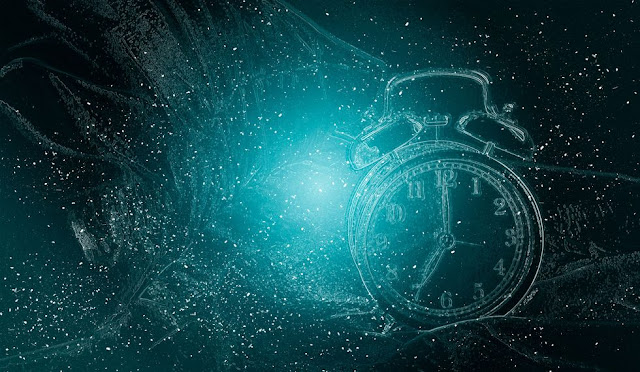Scientists at the University of Melbourne have created the largest time crystal to date by programming one into a simulation in a quantum computer with 57 qubits—the quantum equivalent of a binary bit in a regular computer. That represents an improvement of nearly a factor of three over the last such groundbreaking simulation, as detailed in newly published research in the peer-reviewed journal Science Advances.
But what does the largest-ever time crystal really mean in the context of
quantum computing?
First, we should define some terms. Quantum
computing is an arm of quantum mechanics, which is a way of understanding the
world on the scale of electrons. Seen extremely close up, atoms and their particles act
a certain way when they’re observed versus when they’re just going about their
normal activities. Think of it as physicist Sean Carroll puts it in his
book The Big Picture: quantum mechanics is like an opponent’s
hidden poker hand. They can say they’ve won, but you don’t know exactly what
they have until they turn over their cards.
Time crystals are a special case of quantum mechanics
first conceived of ten years ago, Science reports, when Nobel Prize winner and
theoretical physicist Frank Wilczek wondered if the patterns of atoms that form
crystals could somehow take place in time rather than space. What if time could
arrange itself in the same, almost unfathomably orderly way, as the atoms do
within an elemental crystal?
One of the major upsides to the theoretical
time crystal is that, as conceived by Wilczek, they don’t use any energy as the
electrons change around in time itself. This results in a special phase of
matter that appears to violate Newton’s first law of motion, putting time
crystals in the same category as superconductors. These are materials under special
conditions—like supercooling matter close to absolute zero—where they lose all resistance as they pass
electrons around. Superconductors are also a quantum phenomenon.
Although Wilczek conceived of time crystals in
2012, it took until 2016 for someone to mock up the concept in real life. At
that time, scientists realized they could use qubits (artificial particles linked with quantum
phenomena) to simulate what researchers were calling time crystals. From there,
they were off to the races, arranging small amounts of qubits into time crystal
configurations and then adding more and more qubits.
Now you’re all caught up. In their experiments,
the University of Melbourne scientists used remote computing to access an IBM
quantum computer in the United States. (Think of this when anyone says you
can’t work remotely!) They were able to make changes to individual qubits in
the system, and then use strong magnetic pulses to reunify the field into one
large acting time crystal. The system was also seemingly immune to lesser
magnetic pulses, meaning the crystal only interacted in this way when the
scientists really wanted it to—not with just any whimsical pulse. Like a
hanging chad, we want the system to avoid almosts and halfways.
This work shows a lot of hope for time crystals, the researchers say, especially in terms of using time crystal systems as possible memory in quantum computers. That will take a lot more time, though, as this 57-qubit system can only “hold a charge” for up to 50 cycles before the qubits revert to more random behaviors.



